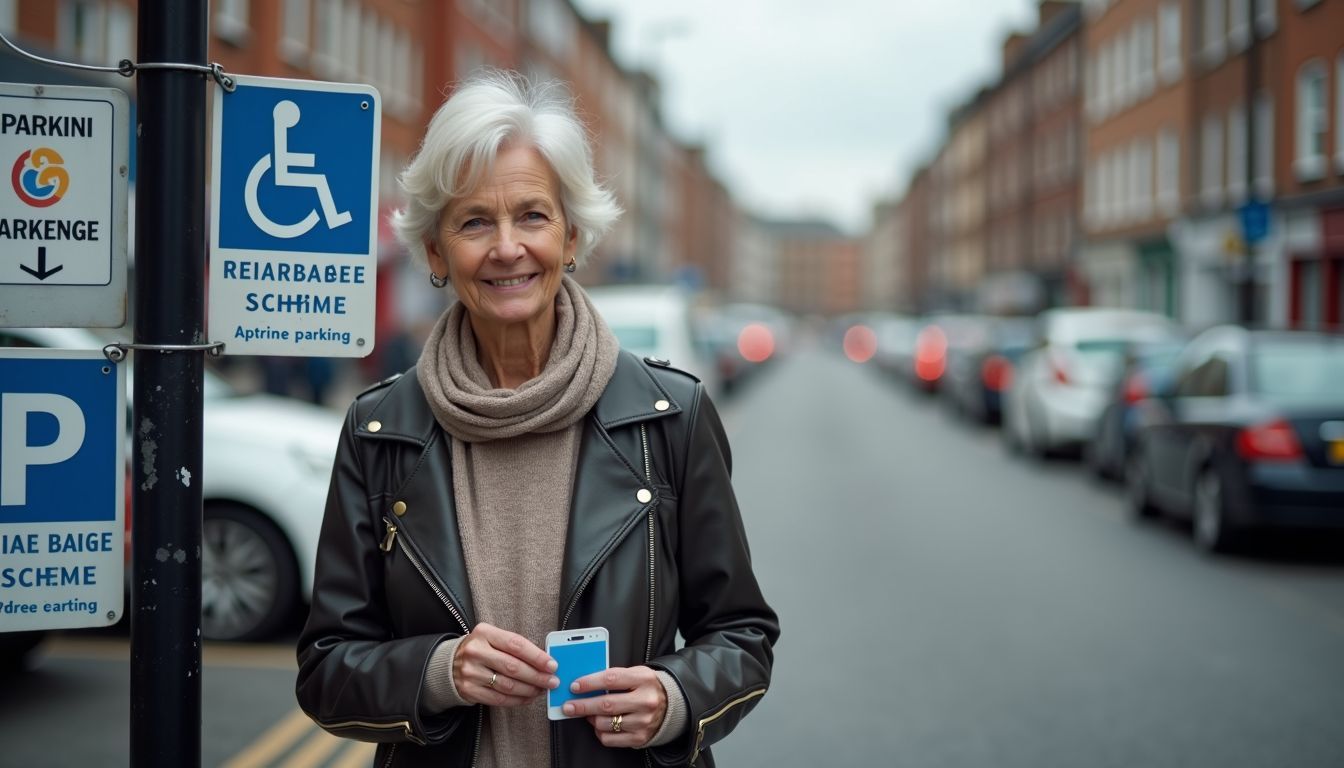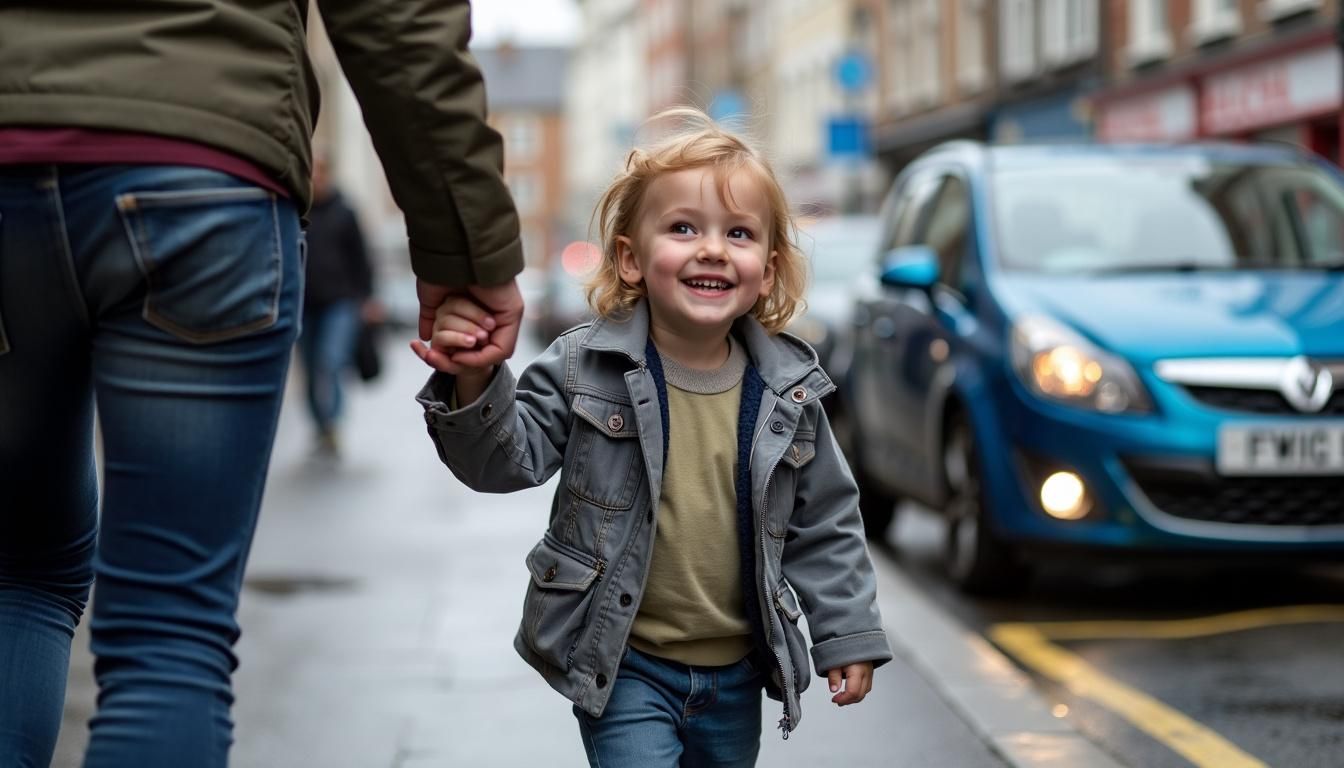Blue Badge For Kids: Supporting Children With Disabilities
Are you struggling to find suitable parking for your child with a disability? The Blue Badge scheme for children with disabilities offers a solution. This programme provides special parking permits for disabled children and their carers.
Our article will guide you through the Blue Badge application process and its benefits. Read on to learn how this scheme can help your family.
Understanding the Blue Badge Scheme

The Blue Badge Scheme helps disabled people park closer to their destination. It’s a national program that gives parking perks to those who need them most.
Eligibility for Children
Kids with disabilities can get a Blue Badge. This helps them park close to where they need to go. Children who get disability living allowance may qualify. Those with hidden disabilities like autism can now apply too.
Parents or carers can ask for a Blue Badge for their child. They must show proof of the child’s condition. This could be medical reports or a letter from a doctor. The badge helps families access services more easily.
Next, we’ll look at special rules for very young children.
Special Provisions for Children Under Three
The Blue Badge scheme has special rules for kids under three. These rules help families with very young disabled children. Babies and toddlers with certain health issues can get a Blue Badge.
This includes kids who need bulky medical gear or can’t be away from a vehicle for long.
For these little ones, the badge helps parents park close to important places. It makes trips to the doctor or hospital easier. The badge also helps families do daily tasks with less stress.
Parents can apply for the badge online or by post. They need to show proof of their child’s condition. This might be a letter from a doctor or health worker.
Applying for a Blue Badge for Children
Applying for a Blue Badge for your child is easy. You can do it online or by post. You’ll need to give some details about your child and their needs.
Required Documents
Getting a Blue Badge for a child needs some key papers. Here’s what you must have:
- Proof of who the child is: This can be a birth certificate or passport.
- Proof of address: A recent bill or bank statement will do.
- A recent photo of the child: It should show their face clearly.
- Proof of benefits: If the child gets certain help, like Personal Independence Payment.
- Medical proof: A doctor’s letter or report about the child’s condition.
- Proof of mobility issues: This could be a physio report or school statement.
- Proof of hidden disabilities: For kids with autism or mental health issues.
- National Insurance number: For the parent or carer applying.
- Driving licence: If the child is old enough to drive.
- Details of current Blue Badge: If renewing one.
The next step is to learn how to apply for a Blue Badge online.
Online and Postal Application Processes
Applying for a Blue Badge can be done online or by post. Both ways are easy and help families get parking permits for disabled children.
- Online application:
- Visit the official Blue Badge website
- Fill out the form with your child’s details
- Upload proof of identity and disability
- Pay the fee using a credit card
- Submit the form and wait for a reply
- Postal application:
- Get a form from your local council
- Fill it out with a pen
- Add copies of needed papers
- Send it all to the address on the form
- Wait for the council to contact you
- Required papers:
- Proof of your child’s identity
- Proof of address
- A recent photo of your child
- Proof of disability or health issue
- Help with forms:
- Ask a social worker for help
- Call the council if you have questions
- Get aid from a family member or friend
- Processing time:
- Online forms are faster
- Postal forms take longer to process
- Most replies come within 6-8 weeks
- Costs:
- Fees vary by area
- Some places offer free badges
- Ask about help if you can’t pay
How to Apply for a Blue Badge Online
Online applications make getting a Blue Badge easier. Here’s how to apply for a Blue Badge online:
- Go to the official government website for Blue Badge applications.
- Click on “Apply for a Blue Badge” to start the process.
- Fill in your personal details, including name and address.
- Provide info about your child’s disability or health problem.
- Upload proof of your child’s identity, like a birth certificate.
- Add a recent photo of your child for the badge.
- Pay the fee for the Blue Badge online.
- Submit your application and wait for a response.
- Check your email for updates on your application status.
- If approved, you’ll get the Blue Badge in the mail.
Benefits of the Blue Badge for Children with Disabilities
Blue Badges help kids with disabilities in many ways. They make life easier and give children more freedom.
Accessibility and Convenience
Blue Badges make life easier for disabled kids. They let families park close to where they need to go. This helps children with hidden problems like autism too. Now, these kids can get to places without much trouble.
Parking near shops, schools, or doctors is now simple. Kids don’t have to walk far. This saves time and energy. It also keeps them safe. The badge works in many places. So, families can plan trips with less stress.
They know they’ll find a good spot to park.
Enhanced Mobility and Independence
Accessibility leads to more freedom for kids with disabilities. The Blue Badge scheme helps children move around easier. It lets them park close to where they need to go. This means less walking for those who find it hard.
Kids with badges can join in more activities. They can go to school, shops, and fun places without trouble. The badge gives them a chance to be more independent. It helps them feel like other kids their age.
This boost in freedom can make a big difference in their daily lives.
Conclusion
The Blue Badge scheme helps kids with disabilities. It gives them better access to places they need to go. Families can park closer to their stops with this badge. This makes life easier for disabled children and their carers.
Getting a Blue Badge can open up new chances for kids to join in and feel free.
FAQs
1. What is a Blue Badge for kids?
A Blue Badge helps children with health problems park closer to places. It’s for kids with pain, breathing trouble, or mental health issues.
2. How can I get a Blue Badge for my child?
You can ask for a Blue Badge from your local council. They may need info from your child’s doctor or social worker.
3. Can kids with hidden illnesses get a Blue Badge?
Yes. Children with unseen problems like dementia or mental disorders can get a Blue Badge too.
4. Does a Blue Badge help with other things?
Yes. It can help with the London Congestion Charge and Low Emission Zone fees.
5. How long does a child’s Blue Badge last?
A Blue Badge usually lasts for three years. You need to apply again after that time.
6. What if my child has a terminal illness?
Children who are very sick can get a Blue Badge faster. This helps in emergencies and with their care needs.

